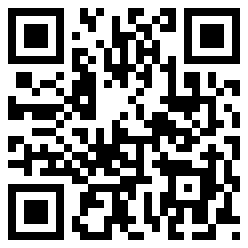QR code
 Quick Response code, a.k.a. matrix code, 2D barcode, 2-D bar code image, graphical tag, jag tag, black and white square
Quick Response code, a.k.a. matrix code, 2D barcode, 2-D bar code image, graphical tag, jag tag, black and white square A pattern of black and white squares that can be scanned by the camera on a smartphone to download information.
A "QR code" is a matrix code (which is a two-dimensional bar code) that is a two-dimensional way of representing information. It is similar to a linear (1-dimensional) bar code, but has more data representation capability.
Initially used for tracking parts in vehicle manufacturing, QR codes are now used in a broader context including both commercial tracking applications and convenience-oriented applications aimed at mobile phone users (known as mobile tagging).
Businesses can use QR codes for coupons, as a call to action, to offer consumers advice or additional information, or for company literature that can't be included in a simple advertisement. Users with a camera phone and a QR code reader app (software that you download) can scan the image of the QR code causing the phone's browser to launch and redirect to the programmed URL. This act of linking from physical world objects is known as a hardlink (or physical world hyperlinks).
Users can generate and print their own QR code for others to scan and use by visiting one of several free QR code generating sites. The "QR" is derived from "Quick Response", as the creator intended the code to allow its contents to be decoded at high-speed.
Historical perspective: Created by Japanese corporation Denso-Wave in 1994, QR codes are common in Japan and as of 2009, they were the most popular type of two dimensional codes as most current Japanese [[cell phone|cell phones]] can read this code with their camera. QR codes storing addresses and URLs may appear in magazines, on signs, buses, business cards or just about any object that users might need information about.


Edit Word